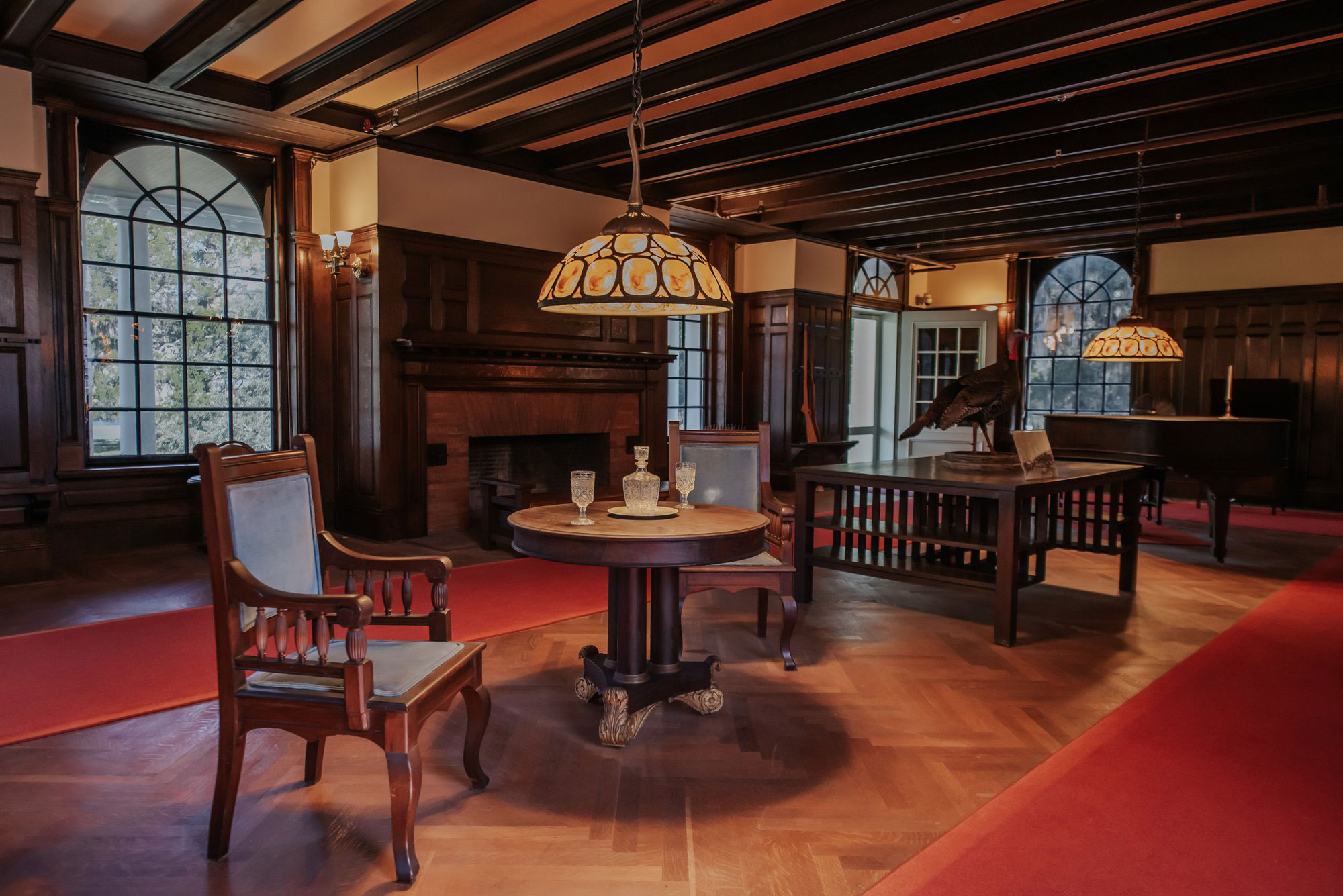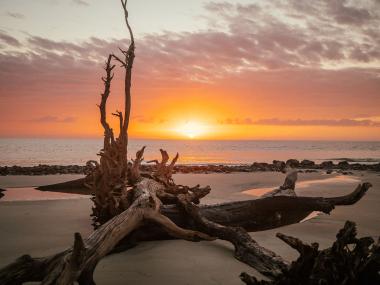Cumberland Island's Historic Sites
Explore the remnants of early inhabitants and settlers dotted among the island’s natural scenery.
From the indigenous people of the Timucua tribe to Spanish missions, English forts, Southern estates, freed Black communities, and summer homes of wealthy industrialists, Cumberland Island has a history that dates back more than 4,000 years. Many of the island’s historic landmarks are accessible via a hike or bicycle ride along a 50-plus mile trail network or with ranger-led and other guided tours.
For an overview of the island’s historic sites, book a guided walking experience with Molly’s Old South Tours. The walking tour includes stops at the ruins of the Carnegies’ Gilded Age-era mansion, the marsh-side gravesite of Revolutionary War general Light-Horse Harry Lee, and the island’s oldest building, built more than 200 years ago by another Revolutionary War hero, Nathanael Greene. Advanced reservations are recommended for the two-hour tours, which depart daily at 12:30 p.m. at the Dungeness Dock every day the ferry runs.
Here are some of Cumberland Island’s other can’t-miss spots and how best to see them.
Dungeness Ruins
Located on the island’s southeastern side just a mile from the Sea Camp dock, the Dungeness Ruins are part of the larger Dungeness Historic District. The first home on the site was built in 1803 by Catherine, widow of American Revolution Major General Nathaneal Greene, and her new second husband, Phineas Miller. The grand house featured formal landscaping surrounded by cotton fields and olive, orange, and fig orchards.
Abandoned after the Civil War, the estate was purchased by the Carnegie family in 1881, who transformed the ruins and agricultural lands into a glamorous, 59-room Queen Anne-style mansion with a network of lush gardens and manicured lawns. Although the mansion burned in 1959, the ruins are still one of the island’s most popular destinations, with historic photographs and exhibits dedicated to past inhabitants.
The free, ranger-led, 60-minute Footsteps tour is offered Fridays, Saturdays and Sundays when staff is available. It begins at the Dungeness dock at 10 a.m. and 12:45 p.m., and covers about 1 mile in distance. Ask if tours will be offered on the day of your visit. You also can take a self-guided tour via a 2.5-mile, out-and-back hike from Sea Camp dock.
Plum Orchard Mansion
This Georgian Revival mansion was built in 1898 by Lucy Coleman Carnegie, widow of Thomas Carnegie, as a wedding gift for one of their nine children, George Lauder Carnegie, and his new bride, Margaret Thaw. Located on the island’s west side along the East River, the home was the couple’s winter residence until George died in 1921.
Visitors can take free daily tours of the 22,000-square-foot mansion, which contains period architecture and furnishings as well as other exhibits dedicated to early 20th-century life and the family. Tours are offered at 11 a.m., 1 p.m. and 2 p.m. daily, and it’s recommended visitors bike the seven miles to the site — the trip takes approximately 45 minutes.
The mansion is also part of the island’s Lands and Legacies Tour, a six-hour guided excursion that includes other island historic sites like the Settlement/First African Baptist Church and Cumberland Island Wharf.
The Settlement/First African Baptist Church
Built in 1893 by the area’s Black residents and families — many of them formerly enslaved on the island’s plantations — the one-room First African Baptist Church served as both a community center and house of worship for the island’s tight-knit northern community, known as the Settlement. John. F. Kennedy, Jr. and Carolyn Bessette were married here in 1996.
Because of its remote location, the National Park Service recommends visitors only visit the church as part of the guided Lands and Legacies Tour.
Ice House Museum
Originally built around 1900 to store large quantities of ice that were shipped to the island for the Carnegie Estate, the building has since been restored by the National Park Service as a self-guided museum. Exhibits include a history of the island, its archeology, and famous residents and mansions.
The museum is located on Cumberland’s southwest side next to the Dungeness dock and is open daily from 8:30 a.m. to 4:30 p.m.






